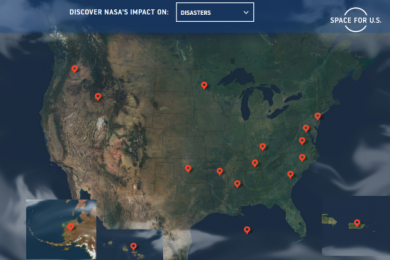The National Aeronautics and Space Administration (NASA) has recently released a new website, SpaceforUS, which intends to highlight how NASA has used its Earth observation data to better the living conditions of people in all 50 states of the United States of America.
SpaceforUS includes contains a total of 56 stories that illustrate NASA’s science and the impact it has had across the country. The aim is to showcase the power of Earth observation through state-by-state project examples, such as the use of satellite technologies that helped to create high-quality images to identify power averages and guide first responders for life-saving aid during Hurricane Rita.
Through this new and interactive website, NASA highlights the innumerable ways in which its Earth observations has helped administrators make informed decisions in the areas of public health, disaster response and environmental protection, from helping farmers manage crops during a drought, to aiding first responders as they react to natural disasters.
On the website, readers can browse stories on animals, disasters, energy, health, land and water either by state or by topics. Each click brings to the readers a story about the different ways in which people are using NASA data in their day-to-day lives.
Behind all the stories reported, there is the NASA's Earth Science Division (ESD), responsible for developing the technology, build and launch the instruments, analyze the data and help put its findings to practical applications in areas including health and air quality, disasters warning and mitigation, ecological forecasting, water resources management, food security and building the knowledge to manage this information and put it to use for society.

